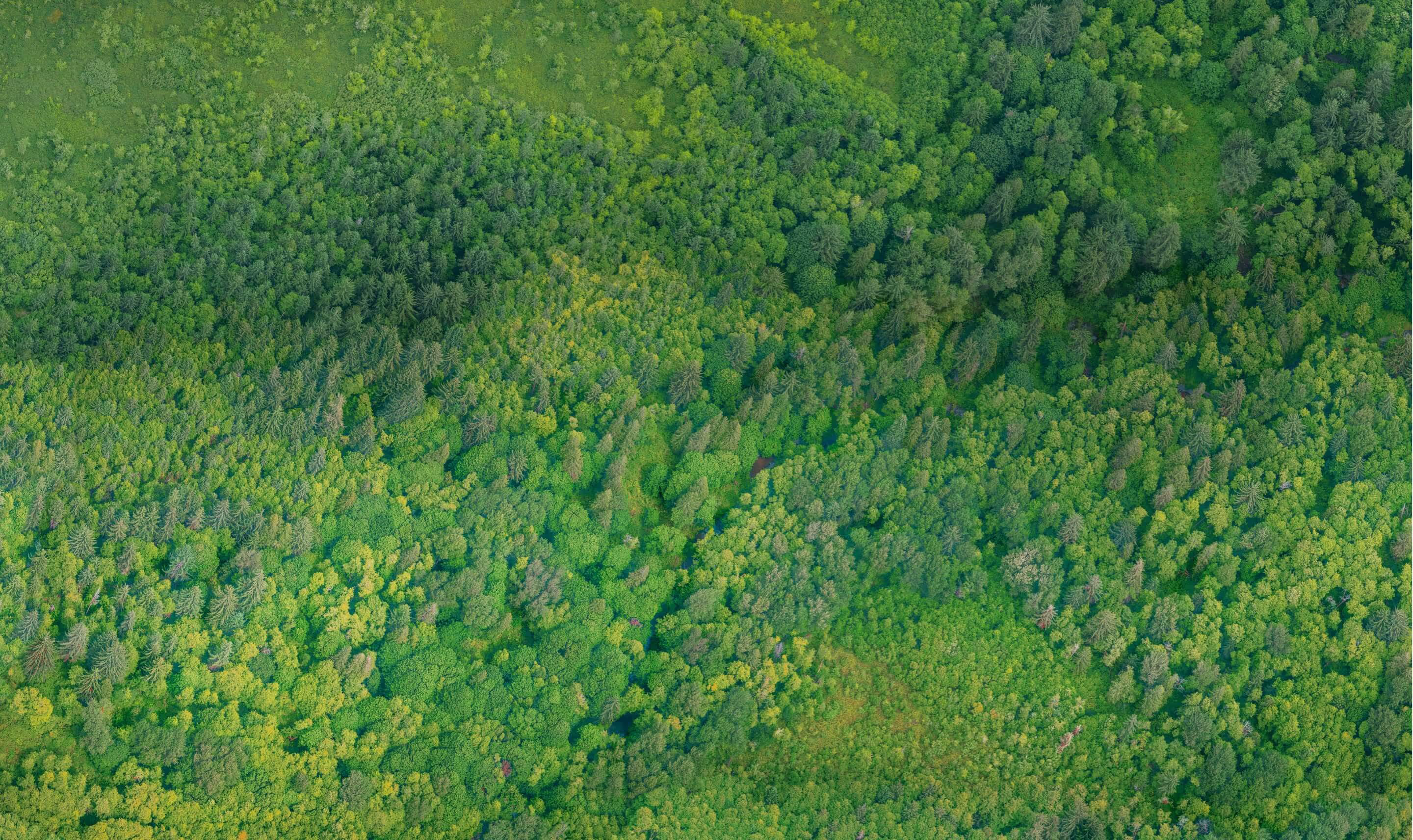The importance of mangrove planting in the fight against climate change
.avif)
There is no need to look for sophisticated technological solutions to stem the ravages of climate change! Natural treasures offered by our planet can be powerful and often underestimated allies in this fight. Among them: mangroves. Guardians of coastal areas, irreplaceable carbon sinks, havens of marine biodiversity, economic drivers for local communities and agents of resilience in the face of growing climate impacts. Let's look at this endangered and yet indispensable plant ecosystem.
What is a mangrove?
The mangrove is a tropical or subtropical coastal ecosystem composed mainly of mangroves, its emblematic tree. What is the amazing particularity of this plant?
Mangroves are trees or shrubs capable of living in difficult conditions such as salty, brackish soils. They also withstand fluctuations in water levels, tides. Characteristics of mangroves, they develop aerial roots, called pneumatophores, which allow them to breathe in water-saturated soils and to stabilize their structure in muddy land. Some species of mangroves, such as red mangroves (Rhizophora mangre), develop stilt roots that rise in the form of aerial trunks before entering the ground.
The term “mangrove” refers to both vegetation and the associated ecosystem. This coastal forest is an essential living environment for many marine and terrestrial species, and for the ecological balance of coastal areas.
Did you know that? mangroves represent only 1% of the world's tropical forests. 40% of their area is found in 4 main countries: in Indonesia (19% of the world total), Brazil, Nigeria and Mexico.

Mangroves in danger
More than 35% of mangroves have disappeared in the world since the beginning of the 2000s. This deforestation is mainly due to the development of aquaculture in these areas: shrimp are replacing mangroves. But pollution is also the cause, the acidification of the oceans and the rise in their level. If nothing is done, by 2100, mangroves in French overseas territories, for example, could suffer a 13% reduction in their current surface. In Mayotte and Martinique, urbanization has a particular impact on them.
It is crucial to reverse the trend quickly to benefit from all the advantages that mangroves and mangroves offer to the planet!
.avif)
The mangrove, natural shield
The mangrove is an ecotone, in other words a transition zone between land and sea. Indeed, mangroves grow at the border of the two, which makes them essential for the protection of coastal soil. They defend coastlines against corrosive erosion and devastating storms. Knowing that climate change is only increasing their frequency and power, mangrove forests are becoming indispensable. Their labyrinthine roots stabilize soils and reduce the destructive effects of waves. They provide a vital first line of defense for vulnerable coastal communities across the world.
Mangroves, powerful carbon sinks
What many don't know is that mangroves are not only guardians of coastlines, but also key elements in capturing carbon from the atmosphere. Their ecosystems, despite their relative small size, have a phenomenal carbon storage capacity, often surpassing that of terrestrial forests. A study ascribes to them a carbon capture potential that is 3 to 5 times greater than the latter. By planting mangroves, we can aspire to mitigate the impacts of climate change by effectively capturing and sequestering atmospheric carbon.
Marine biodiversity sanctuaries
Mangroves and mangroves are not only picturesque landscapes; they are also essential nurseries for marine biodiversity. They are home to a multitude of species, from fish and crustaceans to migratory birds, and provide crucial habitats for breeding, feeding, and protecting young marine animals. They also act as natural filters by trapping pollutants from runoff water before they reach coral reefs and other marine ecosystems.
The mangrove, source of subsistence for local populations
In addition to their ecological value, mangroves, forest in the sea, are an economic pillar for many coastal communities. The resources provided by these ecosystems—fish, shrimp, crabs, crabs, lumber, and more—are critical to the livelihoods of millions of people around the world.

Some examples of mangrove restoration in the world
Here are some inspiring examples of mangrove protection or replanting projects carried out in several areas around the world:
The mangrove conservation program in Kenya by UN-REDD
In Kenya, it is estimated that between 1985 and 2009, mangroves have lost more than 20% of their surface. Over the past 3 years, the United Nations, the Kenyan government and other partners have embarked on several community projects to conserve this ecosystem. They allow local populations to have access to additional income while maintaining biodiversity and the environment. Mikoko Pamoja is one of these projects with the conservation of approximately 1,170,000 mangroves on 117 ha allocated by the Kenyan government.
The rehabilitation of mangroves in Indonesia
In Indonesia, where much of the mangrove has been destroyed due to intensive logging and aquaculture, several restoration initiatives have been launched.
Our NGO LIFE, with our SAPOUSSE campaign, operates in the West Tenggara region, and more specifically in the village of Genggelang. There, we are setting up a mangrove and fruit tree planting project. In total, 20,000 trees will be planted there. We are also making the population aware of the importance of this ecosystem.

In Thailand
In Thailand, more than 700 km of coastline are threatened by erosion, in other words a quarter of the country. The small village of Samut Chin is symbolic of this situation. The mangrove completely uprooted has given way to shrimp farming ponds. Flooding has increased. Now all that remains is the Buddhist temple surrounded by water... The head of it has launched a vast rehabilitation program. Awareness of the importance of mangroves and the preservation of mangroves is gradually developing. The mobilization of the whole country is being organized.
The mangroves of French overseas territories
IFRECOR (French Coral Reef Initiative) and the Fondation de la Mer are launching a call for projects to preserve mangroves in French overseas territories “SOS Corail”. They are present in 10 territories where they occupy almost 88,000 ha. 90% of their surface is located in Guyana and New Caledonia.
Did you know that? New Caledonia has up to 19 different species of mangroves.
These examples illustrate the diversity of mangrove restoration initiatives around the world and highlight the importance of developing community action, awareness, and international collaboration to rehabilitate and protect these vital ecosystems.
Education and awareness
A crucial element in the survival of mangroves and mangroves is the education and awareness of local communities and society as a whole. By understanding the multiple benefits of mangroves and recognizing their importance to the health of our planet, we can mobilize greater support for their preservation and restoration.
A necessary global action
The fight to save mangroves cannot be led by a single country or organization. International collaboration is essential to implement effective mangrove planting and restoration strategies, as well as to ensure their long-term protection.
As we fight against the devastating effects of climate change, mangroves offer a simple but powerful solution. Located between land and water, planting and saving them has multiple benefits, ranging from protecting the coastline to reducing carbon emissions, maintaining biodiversity and supporting local economies. Starting to plant and restore mangroves is not only a smart environmental decision, but also an investment in the resilience of coastal communities and in a more sustainable future for all.
Join our NGO LIFE. With us, contribute to the protection and restoration of the mangrove.



.avif)





